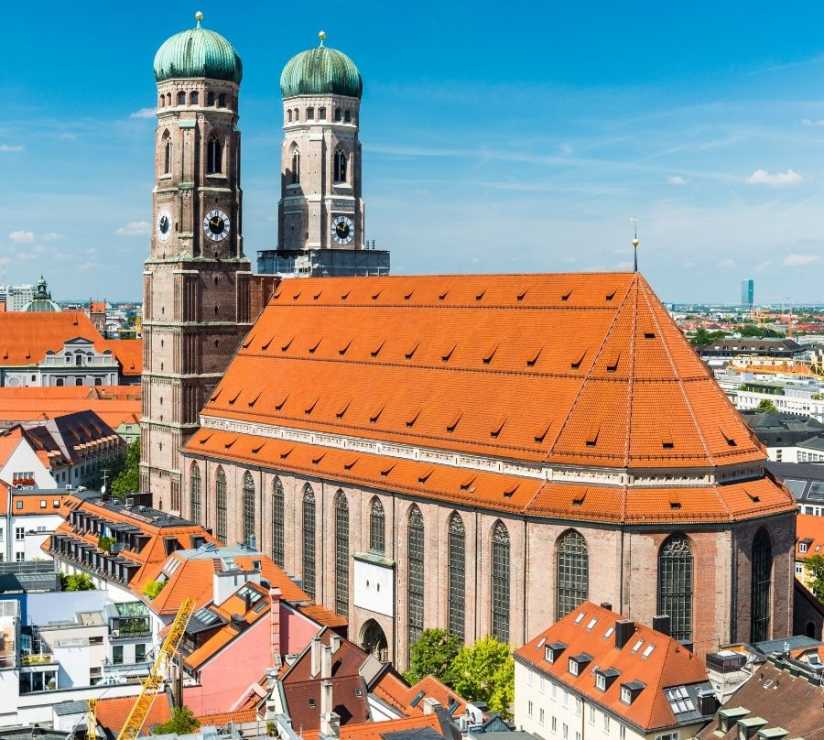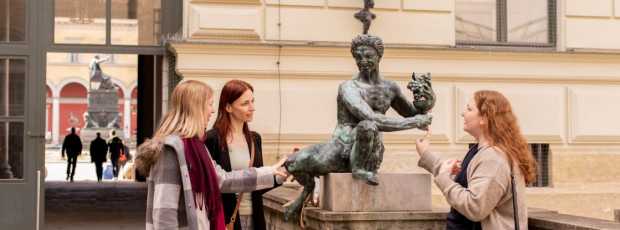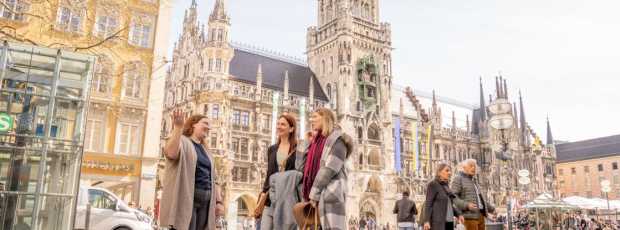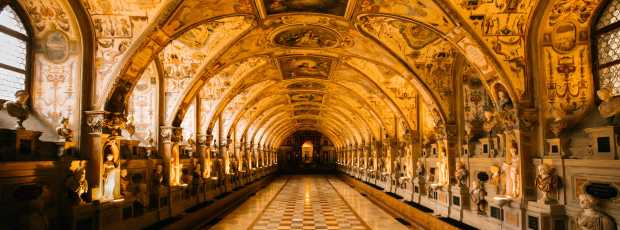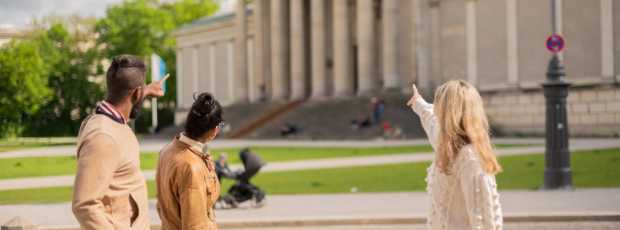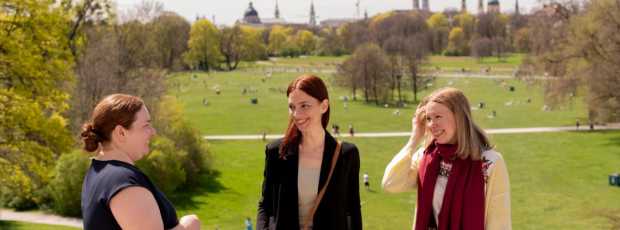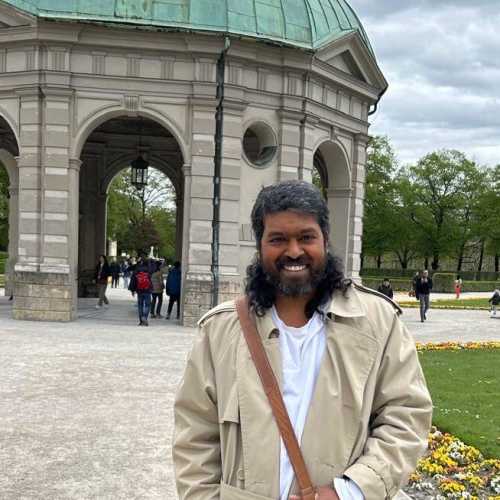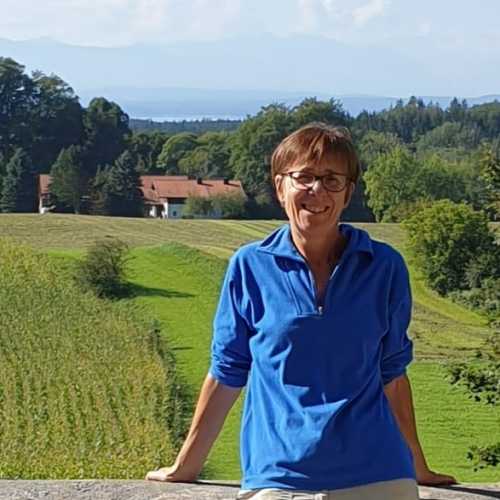Table Of Contents
- 2 Days, Many Moods — Why Munich's Pace Works
- Day 1: Starting in the Center — Old Town Anchors
- Day 2: Royal Streets & Palaces in the Morning
- Optional Side Trip: Neuschwanstein Castle
- Wrap Up: Is 2 Days Enough? What You'll Take With You
2 Days, Many Moods — Why Munich's Pace Works
Munich doesn't demand you sprint through it like some cities do. This city has an unhurried confidence that lets you see what you came for.
I've lived here my whole life, watching tourists tear through the old town with phones out, checking off main sights like grocery shopping. That's not how Munich works. This city rewards you for slowing down to notice how people lean against their bikes while chatting, or how they sit at a beer garden for three hours on a Tuesday afternoon without anyone thinking it's weird.
Two days give you time to hit the major attractions without frantic energy.
Day 1: Starting in the Center — Old Town Anchors
Morning: The Heart of the Old Town
Start at Marienplatz because everyone does, but also because it makes sense. The old town spreads out from here in all directions, and you'll get your bearings faster than trying to navigate from some random hotel corner.
The Neues Rathaus dominates the square with neo-Gothic towers that look medieval but are from the 1800s. Munich loves this architectural confidence trick. The New Town Hall has a glockenspiel at 11 AM and 12 PM daily, plus 5 PM from March through October. It's fine, not life-changing.
Exploring the Town Hall Complex
What I like about the Town Hall is the inner courtyard you can go through. Most people miss it. It's quieter than the main square, and you see how the building functions as a working office rather than a tourist backdrop.
The New Town Hall tower offers views over old town rooftops. It's walking distance from everything else, making it a good orientation for your first morning.
Traditional Breakfast Spots
Before you stroll too far, get breakfast sorted. White sausage (Weisswurst) is the traditional Munich morning meal, but only until noon. It's a local rule that makes no sense, but everyone follows. Try it at Ratskeller München or Café Frischhut, which has been making fresh pastries since 1973.
Café Frischhut is where locals go, not just tourists. Their delicious coffee comes with proper ceramic cups, and staff won't hover to turn tables faster. You can sit and plan your day. It's my personal favourite breakfast spot in the old town.
Frauenkirche and Hidden Gems
Walk to the Frauenkirche from Marienplatz. Five minutes through the streets showing what Munich looked like before becoming a major city. The Frauenkirche is Munich's cathedral, with two towers visible from almost anywhere in the city center. The south tower is taller, bothering people who like symmetry.
The Toy Museum sits in the tower of the Old Town Hall (Altes Rathaus) at Marienplatz. Small, dusty, and fun for 30 minutes. Not essential, but it gives you air conditioning and perspective on plastic usage then versus now.
Viktualienmarkt: The Heart of Local Life
Viktualienmarkt is Munich's central market, established in 1807. Not cute or artisanal, just a proper market where people buy food. Get lunch from various stalls, self-service lunch at its best. Grab what looks good, find a table, and eat with people who work nearby.
The Viktualienmarkt beer garden has chestnut trees providing shade. Order wheat beer or sparkling water with your market lunch. This popular beer garden works year-round, most pleasantly during warmer months.
Museums Worth Your Time
The Deutsches Museum is the largest science museum in the world. It's enormous and overwhelming; you could spend two days here. Pick one section: transportation has real planes hanging from the ceiling.
The museum sits on an Isar River island, giving a different perspective on Munich's layout. From here, you see how the city follows the river's curves.
Historical Context and Walking Tours
The NS Documentation Center addresses Munich's Nazi history directly. Not comfortable, but important. Located in Maxvorstadt at the site of the former Brown House near Königsplatz, the museum doesn't soften what happened.
Consider a walking tour covering the city center's history. Munich has stacked historical layers, and good tour guides point out details you'd miss alone. Walking tours help you understand the old town layout better than wandering solo.
Public transportation is reliable, so you can cover more sightseeing without exhausting walks. Excellent tram and U-Bahn systems connect major attractions.
The English Garden Experience
The English Garden is bigger than Central Park and feels like Munich's living room. Everyone comes here. Families, students, and people who work nearby want 20 minutes of grass under their feet. The Chinese Tower sits in the middle of the park, and it's exactly what it sounds like: a pagoda that some 18th-century landscape architect thought would look good in Bavaria.
The Chinese Tower has Munich's second-largest beer garden around its base. This is where you'll see how beer garden culture works year-round. You can bring your food, kids run around between tables, and strangers share benches without anyone getting weird about it. The outdoor beer garden setup makes more sense when you see it in action.
Eisbach River: Check Before You Visit
Near the Chinese Tower, the Eisbach River is famous for urban surfing. The artificial wave created by water flow became one of Munich's unique attractions, drawing surfers from across Europe. However, the wave is currently closed until further notice following a fatal accident in April 2025. City officials may drain the river channel for investigation. Check the latest status before visiting, as conditions may change.
Beer Garden Culture in the Park
The popular beer garden at the Chinese Tower serves traditional Bavarian food, but you can also buy groceries at the Edeka across the street and have a picnic instead. The park has rules posted everywhere, but mostly people ignore them as long as they clean up after themselves.
Explore different sections of the garden and you'll see how Munich balances urban life with green space. There are meadows with designated areas where nudity is allowed (clearly marked FKK zones). It’s legal and part of the park’s long-standing culture. The park works because it's big enough for everyone to find their corner.
The river runs along one edge of the English Garden, and people treat it like an extended beach during summer. You can stroll along the riverbank and see how locals use this space for recreation throughout the afternoon. The Englischer Garten becomes especially lively during warm weather when families claim spots for entire afternoons.
Munich's Beer Hall Scene
Munich's beer hall scene is not just tourist theater. Locals go to these places, though they tend to avoid the most obvious ones during peak tourist hours. Augustiner Keller is less touristy than Hofbräuhaus but still gives you the full beer hall experience. Long wooden tables, servers in traditional dress, and the kind of background noise that makes conversation easier.
Augustiner Keller traces its beer history to 1812, when the site was used as a beer storage cellar. It evolved into a full beer garden in the mid-1800s and took on the name Augustiner Keller in 1880. The recipe hasn't changed much since then. The restaurant focuses on traditional Bavarian dishes that pair well with their house beer. It's one of my few recommendations for beer halls that still feels authentic rather than performative.
Dining Beyond Beer Halls
The restaurant scene in Munich extends beyond beer halls. You can find good Italian food, Vietnamese pho, and Turkish döner within a few blocks of each other. But if you're here for two days, try at least one proper Bavarian restaurant. The portions are large, the flavors are straightforward, and the prices are reasonable for a major European destination.
Insider tips for beer halls: You don't have to finish everything they serve you. The portions are designed for people who work physical jobs. Also, you can ask for a smaller beer. They have 0.3-liter glasses, not just the giant steins that appear in photos.
Evening Activities and Views
One of the fun things about Munich evenings is how late the light lasts in summer. You can have dinner at 7 PM and still have two hours of daylight afterward. Use this for exploring, or find a spot with a beautiful view of the city. The steps of Maximilianstrasse give you a good angle on the old town, especially as the light changes.
Evening beer garden visits show you a different side of Munich's social life. People come after work to decompress, and conversations tend to be more relaxed than the tourist-heavy afternoon crowds. The beer garden atmosphere in the evening feels more like a neighborhood pub than a tourist attraction.
Day 2: Royal Streets & Palaces in the Morning
Nymphenburg Palace: Royal Grandeur
Nymphenburg Palace sits about 20–30 minutes from the city center, depending on your route. You can take the S-Bahn to Laim and transfer to a bus, or ride tram 17 and walk about 15 minutes. Both options are scenic and efficient. It was the summer residence of Bavarian royalty, and it shows. The palace is massive, symmetrical, and surrounded by gardens that go on for kilometers. In morning light, the baroque facade looks like someone's idea of what a palace should be.
Nymphenburg Palace has the expected gilt mirrors and painted ceilings, but also some unexpected details. King Ludwig I had a "Gallery of Beauties" featuring portraits of women he found attractive, including a butcher's daughter and an Irish dancer. It's strange and personal in a way that makes the history feel less remote.
The Nymphenburg Palace grounds include several smaller pavilions and a large park that's worth exploring if you have time. Many visitors focus only on the main palace, but the gardens show you how 18th-century royalty thought about landscape design.
Munich Residenz: Power and Politics
The Munich Residenz is closer to the city center and shows you how Munich's rulers lived when they were in town for business rather than pleasure. The Munich Residenz complex includes the palace, treasury, and court theater. The treasury has crowns, jewelry, and ceremonial objects that demonstrate exactly how much wealth European royalty accumulated.
The inner courtyard at the Munich Residenz is where you can see the building's scale. It's surrounded by arcades and decorated with frescoes that have survived Munich's various reconstructions. The inner courtyard feels more intimate than the palace's grand halls, and you can imagine people actually living and working here.
Munich wasn't just a regional city but the capital of an independent kingdom until 1918. The architecture reflects that political importance. The Munich Residenz particularly shows you how power operated in pre-modern Europe.
Additional Museums and Attractions
If you're interested in modern technology, the BMW Museum and BMW Welt sit next to each other north of the city center. The BMW Museum focuses on the company's history, while BMW Welt showcases current models and future concepts. Both are walking distance from the Olympic Park if you want to combine visits. It's worth a visit if you're into automotive design.
The Haus der Kunst presents contemporary art in a building that has its complicated history. Built during the Nazi period, it now hosts international exhibitions that often address political and social issues. Another example of how Munich deals with its past is directly rather than avoiding it. Visit here if you want to see how the city handles difficult history through art.
For something completely different, the Theatine Church represents baroque architecture at its most theatrical. The yellow facade stands out against Munich's typically more subdued building colors, and the interior continues the dramatic theme with elaborate decorations and frescoes. Many visitors to Europe miss smaller churches like this, but they're often more interesting than the famous cathedrals.
Understanding Munich's Morning Rhythms
Munich's morning rhythms become visible around 8 AM. People bike to work along dedicated lanes, stop at bakeries for breakfast and pastries, then read newspapers on trams. The pace is steady but not frantic. Morning routines here include time for a proper breakfast, not just coffee grabbed while running.
Local morning habits often involve the markets. Viktualienmarkt gets busy early with people buying fresh bread, flowers, and produce for the day. It's functional rather than scenic, which makes it more interesting than markets designed primarily for tourists. The morning crowd shows you how people shop and eat.
Morning activity in Munich also includes a lot of dog walking. The English Garden (known locally as Englischer Garten) fills up with people exercising their dogs, and you'll see the same faces at the same times if you pay attention. It's a social network that operates through routine rather than apps.
If you're staying at a hotel in the old town, your morning can include getting to wherever you're going rather than figuring out public transport. Munich's center is compact enough that most attractions are within walking distance of each other, making morning exploration easy and pleasant.
Lunch Options Around the City
Lunch in Munich can happen anywhere from 11:30 AM to 2 PM, and people take their time with it. The Schwabing district has cafés that serve lunch alongside excellent coffee, and the neighborhood feels more residential than the tourist-heavy old town. This area gives you a sense of how people live when they're not working in the city center.
Your hotel probably included breakfast, but if you're hungry again by mid-morning, Munich's café culture accommodates that. Places like Café Luitpold or Holy Home Café serve substantial lunch options that work whether you want a light meal or something more filling. These spots are walking distance from major attractions but feel removed from the tourist crowds. Visit these places to see how people spend their lunch breaks.
Lunch gives you a chance to see how Munich balances tradition with contemporary life. You can get excellent sushi, Lebanese food, or Vietnamese pho alongside traditional Bavarian dishes. The city's international population means the food scene extends well beyond sausages and sauerkraut, though those remain popular year round. Many restaurant owners here came from other parts of Europe and brought their culinary traditions with them.
Planning Your Next Stop
Plan your next stop based on energy level rather than schedule. If you're tired from palace touring, choose something that requires less moving around. If you're energized, take an active stroll through different neighborhoods to see how Munich's character changes from district to district.
An active walk from Schwabing down to the Isar River takes you through residential areas where you can see how people live here. Apartment buildings with balconies full of plants, small shops that serve neighborhoods rather than tourists, and parks where families gather in the afternoon. This kind of walk shows you Munich beyond the main sights.
The active stroll along the river shows you Munich's relationship with water. The river has been channeled and controlled, but it still provides green space and recreation opportunities throughout Munich. People swim in designated areas during summer, and the riverbanks serve as linear parks that connect different neighborhoods.
Looking for a private city experience in Munich?
Explore the city with a local who plans a private day just for you; no groups, no scripts.
Optional Side Trip: Neuschwanstein Castle
Planning Your Castle Visit
Neuschwanstein Castle sits about two hours from Munich by train, and it's probably the most photographed castle in the world. Disney based Sleeping Beauty Castle on it, which tells you something about both its fairy-tale appearance and its actual historical significance. People come from the world to see this particular castle, making it one of Germany's most visited attractions.
Neuschwanstein Castle was built by King Ludwig II, who was more interested in romantic architecture than practical politics. He bankrupted Bavaria building fantasy castles, and this one was never actually finished. It's beautiful in a completely impractical way, which somehow makes it more interesting rather than less.
Getting There and Back
Getting to Neuschwanstein Castle requires a train ticket to Füssen, then a bus to the castle area. The main train station in Munich connects to the regional rail system, and the trip takes about two hours each way. Factor in waiting time for the castle tour, and you're looking at a full day rather than a half-day excursion.
The trip to Neuschwanstein Castle shows you Bavaria beyond Munich. Rolling hills, small villages, and the kind of countryside that makes people think all of Germany looks like a Christmas market. The train journey itself becomes part of the experience, especially as you approach the Alps and the landscape becomes more dramatic.
What to Expect at the Castle
Neuschwanstein Castle tours are timed and limited, so you need to book ahead, especially in summer. The tour lasts about 30 minutes and covers only a fraction of the rooms. Photography inside is prohibited, which forces you to look at things rather than just documenting them.
The trip back to Munich gives you time to process what you've seen. Neuschwanstein Castle represents a particular kind of 19th-century romanticism that feels both dated and timeless. It's not historically significant in the way that Versailles is, but it captures something about human desires for beauty and fantasy.
Weighing the Time Investment
If you're short on time, skip Neuschwanstein Castle and spend the day in Munich itself. The city has enough to keep you engaged, and the trip to the castle can feel rushed if you're trying to fit it into two days in Munich. But if fairy-tale architecture is what brought you to Bavaria, then make the trip. It delivers on the fantasy, even if the reality is more complex.
The castle attracts visitors from the entire world, and standing in the tour groups, you hear conversations in languages from everywhere. It's one of those places that has transcended its original context to become a global symbol, representing different things depending on who's looking at it.
Wrap Up: Is 2 Days Enough? What You'll Take With You
Reflecting on Your Munich Experience
Two days in Munich gives you enough time to understand the city's rhythm without feeling like you've only scratched the surface. You'll visit the major attractions, get a sense of how locals live, and probably have at least one conversation that surprises you. Days in Munich work well because the city doesn’t overload you with options. You can visit places at your own pace rather than rushing through a checklist.
Munich works well for short visits because it doesn't try to overwhelm you. The sights are significant but not so numerous that you feel guilty for missing something. The beer garden culture encourages slowing down rather than speeding up. The city is compact enough that you can reach most places on foot, but large enough that each neighborhood has its own character. This balance makes Munich one of the more manageable cities to visit in Europe.
What Makes Munich Memorable
What you'll remember about Munich probably won't be the specific museums or palaces, though those matter too. You'll remember the quality of light in the garden at different times of day. The sound of conversations mixing with clinking glasses in beer gardens. The way people here seem genuinely relaxed rather than just pretending to be for the sake of tourists.
Days in Munich teach you something about sustainable tourism. You can see a city thoroughly without trying to consume every possible experience it offers. Quality over quantity isn't just a travel philosophy here; it's how the city itself operates. This approach works particularly well when you have limited time but want meaningful experiences.
Understanding What Munich Offers
For more insights into what Munich is known for, it balances its traditional identity with contemporary reality better than many European cities. It's traditional without being a museum, international without losing its local character, and tourist-friendly without sacrificing authenticity.
Two days isn't enough to become an expert on Munich, but it's enough to understand why people want to come back. The city rewards attention to detail, conversation with locals, and willingness to follow interesting tangents. That's not a bad approach to travel in general, but it's especially effective here.
Final Thoughts on Your Visit
Whether two days in Munich feels too short or just right depends on what you're looking for. If you want to check off major European capitals, two days works fine. If you want to understand how a particular place operates, two days give you a solid foundation. The city has a confidence that lets you enjoy what you're doing instead of constantly worrying about what you're missing.
The best thing about spending days in Munich is that it doesn't feel rushed if you don't try to make it rushed. You'll leave with a genuine sense of the place rather than just a collection of photos and checked boxes. Your Munich experience is what you make of it.
What if your day in Munich was planned by someone who knows it — and you?
City Unscripted matches you with a local host who creates a private experience based on your interests, not a set route.
Tip
We match you with the right host, not just any guide.Want to experience the real Munich with someone who lives there?
A fully private experience, planned and led by a local host who tailors the day to you
Ready to plan your perfect day in Munich?
Start your experienceWhat if your day in Munich was planned by someone who knows it — and you?
City Unscripted matches you with a local host who creates a private experience based on your interests, not a set route.
Want to experience the real Munich with someone who lives there?
A fully private experience, planned and led by a local host who tailors the day to you
